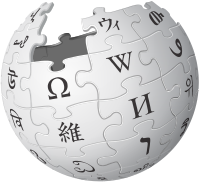
Photo from wikipedia
INTRODUCTION: Indigenous diving populations like the Bajau have extraordinary breath-hold abilities, which includes tolerating arterial partial pressures that are low in oxygen and high in carbon dioxide. While these populations… Click to show full abstract
INTRODUCTION: Indigenous diving populations like the Bajau have extraordinary breath-hold abilities, which includes tolerating arterial partial pressures that are low in oxygen and high in carbon dioxide. While these populations have genetic adaptations that improve their hypoxemic and hypercapnic tolerances, other populations can improve these tolerances through training adaptations that allow for increases in oxygen carrying and pH buffering capacities. For example, two weeks of residence at altitude stimulates increases in hemoglobin mass (Hbmass) via erythropoiesis, while completing apnea training daily for 14 days elevates reticulocyte count. However, it is unclear whether relatively brief (<4 h) daily exposures to moderate hypoxia and maximal apneas, such as may occur with diving, meaningfully stimulates erythropoiesis in people without breath hold diving experience or ancestry. PURPOSE: Test the hypothesis that 14 d of moderate hypoxia for 3 h/d and 10 maximal apneas/d augments circulating Hbmass and reticulocyte count. METHODS: Eighteen healthy adults (27±6 y; 11 women) completed 14 days of training within a 16-day period. Training days consisted of 10 maximal apneas and 3 h of exposure to normobaric hypoxia (FiO2=0.14). Average apnea duration was recorded and presented as mean ± SD. On Days 1, 7, and 14 subjects completed a carbon monoxide rebreathe procedure pre and post training to estimate Hbmass (n=11) and provided a venous sample of blood for reticulocyte count (n=14) pre and post training. Repeated measures linear mixed models were used to assess change in Hbmass and reticulocytes from Day 1. These data are presented as mean difference (diff.) from Day 1 and 95% confidence intervals. RESULTS: Average apnea duration increased from Day 1 (69±29 s) to Day 7 (83±30 s, p<0.01) and to Day 14 (90±29 s, p<0.01), but there was no change from Day 7 to Day 14 (p=0.26). There was no interaction (p=0.79) or main effects of Day (p=0.54) or pre/post training (p=0.94) on Hbmass. Specifically, pre training Hbmass did not differ from Day 1 on Day 7 (mean diff. 23 (–131, 178) g, p=0.91) or Day 14 (mean diff. 5 (–154, 164) g, p=0.99) and post training Hbmass did not differ Day 1 on Day 7 (mean diff. 29 (–152, 210) g, p=0.90) or Day 14 (mean diff. 5 (–154, 164) g, p=0.99). An interaction effect (p=0.02) for reticulocyte count, showed a mean increase from pre to post training on Day 14 (mean diff. 9 (3, 15) #·μL-1, p<0.01). However, there was no change in reticulocyte count between Days (p=0.53). Pre training Day 1 reticulocyte count did not differ from Day 7 (mean diff. -3 (–9, 4) #·μL-1, p=0.48) or Day 14 (mean diff. -2 (–9, 6) #·μL-1, p=0.79). CONCLUSION: Fourteen days of brief daily exposures to moderate hypoxia and maximal apnea training did not augment circulating Hbmass or reticulocytes. Supported by Office of Naval Research award N00014-20-1-2593. This is the full abstract presented at the American Physiology Summit 2023 meeting and is only available in HTML format. There are no additional versions or additional content available for this abstract. Physiology was not involved in the peer review process.
Journal Title: Physiology
Year Published: 2023
Link to full text (if available)
Share on Social Media: Sign Up to like & get
recommendations!